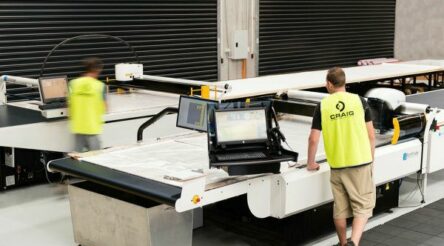Focus on Greens amendment to NRF bill, and adding value to minerals

By Peter Roberts
At a Thursday media conference on the passing of the National Reconstruction Fund (NRF) Corporation Bill by the lower house the media focused questioning of Industry and Science Minister Ed Husic on the government’s acceptance of a Greens amendment, what it meant for fossil fuels, and more generally, on value-adding of Australia’s raw materials.
While the Greens backed down on a wide-sweeping amendment they sought, the government accepted a modest change that prevents the independent body administering the fund from investing in the extraction of coal and gas, with the Greens also promising to support the bill in the Senate.
While the Greens stance suggests a more mature party than the one which once sided with the opposition to vote down a price on carbon – ushering in a decade of inaction by the Coalition government on climate change – Husic dismissed Greens claims that it had won a major victory as a political party understandably characterising their points in their own way.
Husic said: “But what I’m saying to you and what I’ve certainly expressed to the Greens and what I’ve said to the Parliament and publicly is (the NRF) is an investment in manufacturing capability, and was never intended to do what was suggested.
“But there were parties we wanted to work and engage constructively with…and they required that assurance as part of their process of agreeing to this Bill.
“And we’re very grateful for the agreement of the Greens in this, and I am very grateful for the constructive way in which they and the crossbench worked. If they needed that assurance, then so be it.
“The Green amendment…stops this fund doing what it was never going to do anyway.”
Husic did say, however, that the NRF was about manufacturing, and manufacturing did need access to affordable energy.
He also revived a term used infrequently by politicians in recent years – that value adding of resources was one of the best ways to capture economic value onshore.
“If you look in the priority areas (for the NRF), the value add in resources, if we can find ways instead of just mining stuff and shipping it overseas, if we can find the value add, particularly at this moment in time where the world is after our critical minerals and rare earths, then by all means we should have the means within us to value add there and transform them, for example, in energy storage systems, batteries that can be used by industry. ”
However Husic was not as kind as he was to the Greens with the opposition, which opposed the NRF in its entirety, despite the government taking it to the election – an action which would normally be seen as a mandate from the electorate.
Husic said: “I’m really stunned that the Coalition refuses to back blue collar workers in manufacturing.
“I just want the Parliament to be able to work together on something I think is enduring.”
One journalist asked Husic whether, given the massive funds committed to reviving manufacturing by the Biden administration in the Untied States whether $15 billion in the NRF would be enough?
Husic said: “I’m genuinely grateful for the question because now I can go to the Prime Minister and say I’m being questioned to get more money. So I’m more than happy to do that.
“But…in all seriousness, this is a very big fund. $15 billion is one of the greatest investments in manufacturing capabilities in living memory.
“So it’s a big start. Obviously, we want this fund to reflect the needs of the economy at different points in time. And if there’s a case to be made down the track, then let’s look at it.”
Husic characterised the NRF as part of the government’s response to our dependency on concentrated, broken supply chains.
He said he wanted to see the NRF up and running as soon as possible, and the first investments made in key priority areas: value add in resources, value add in agriculture, support in medical sciences, defence capability, energy in terms of low-emission or no-emission technology and the manufacturing of that onshore, and enabling capabilities, particularly around quantum, AI and robotics.
Husic said: “And the Reconstruction Fund itself, again, is a co-investment fund.
“We want to work with superannuation. We’re blessed with the fourth largest savings pool on the planet – we can work with superannuation, we can work with venture capital and private equity and increase the amount of capital that’s available, particularly for SMEs when they want to grow.”
Finally Husic played down the view that government support would mainly go to foreign multinationals, rather than Australian SMEs.
“We’ve tried to prioritise Australian industry.
“If there’s capability that we think is vital to the economy longer term we will always remain open minded as to how we can partner up with firms that want to bring capability onshore.
“But our priority with the National Reconstruction Fund is Australian manufacturing, supporting capability development and building sovereign capability.”
Further reading:
NATIONAL RECONSTRUCTION FUND BILL PASSES LOWER HOUSE
Picture: Ed Husic
@aumanufacturing Sections
Analysis and Commentary Awards Defence Manufacturing News Podcast Technology Videos










